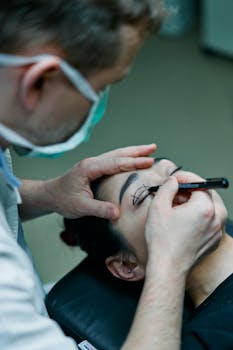Many people seek cosmetic improvements that look natural with minimal downtime, and a liquid face lift is one such option. This non-surgical approach uses injectable products to restore volume, soften lines, and subtly lift facial contours. It’s a popular alternative for those who want improvement without the recovery time, scarring, or risks of traditional surgery.
Liquid Facelift: What it Is and How It Differs from Surgery
A liquid facelift uses dermal fillers and sometimes neuromodulators to achieve a refreshed appearance. Unlike a surgical facelift, which repositions skin and underlying tissue, the liquid facelift relies on volume replacement and muscle relaxation to smooth wrinkles and redefine features. Results are immediate, customizable, and reversible in some cases, especially when hyaluronic acid fillers are used.
Common Products and Techniques
Providers commonly combine hyaluronic acid fillers, calcium hydroxylapatite, and neurotoxins (e.g., botulinum toxin) to address different concerns. Hyaluronic acid restores cheek and lip volume, calcium-based fillers can improve structural support, and neuromodulators reduce dynamic lines. Practitioners choose placement carefully—cheeks, temples, jawline, nasolabial folds, and under-eye hollows are typical treatment zones.
What to Expect During the Procedure
Most sessions last 30–90 minutes. The clinician will assess facial anatomy, discuss goals, and select products and injection points. Topical numbing or local anesthetic may be used to minimize discomfort. Because fillers provide immediate volume, you’ll often see an instant improvement, though subtle swelling and bruising can mask the final look for a few days.
Recovery, Aftercare, and Maintenance
Downtime is minimal compared with surgery. Expect mild swelling, tenderness, and occasional bruising for 1–7 days. Providers typically advise avoiding heavy exercise, excessive heat, and alcohol for the first 24–48 hours. Maintenance intervals vary by product: some fillers last 6–12 months, while longer-lasting materials can persist 18 months or more. Periodic touch-ups keep results fresh.
Risks, Side Effects, and Safety Considerations
Common side effects include swelling, bruising, redness, and temporary lumps. More serious—but rare—complications include vascular occlusion, infection, or unevenness. Choosing a qualified, experienced injector reduces risk. If you experience sudden severe pain, vision changes, or skin discoloration after an injection, seek immediate medical attention. For general background on injectable materials, reputable sources like this overview of dermal fillers provide helpful context.
Who Is a Good Candidate?
Ideal candidates have mild-to-moderate age-related volume loss, skin laxity within a treatable range, and realistic expectations. People with active skin infections, certain autoimmune conditions, or allergies to filler components may not be suitable. A thorough consultation should address medical history, aesthetic goals, and an informed plan for follow-up and maintenance.
Comparisons and Combination Approaches
Some patients combine a liquid facelift with other facial procedures to enhance results. For instance, pairing injectables with surgical rhinoplasty or targeted skin resurfacing can create balanced, long-lasting improvements. If you’re considering multiple procedures, a staged plan and coordination between specialists are important—learn more about surgical recovery timelines and how they might affect planning in related procedures via this rhinoplasty recovery timeline and what to expect after nose surgery.
Cost and Practical Considerations
Costs vary widely by practitioner, geographic region, and the amount/type of product used. Because treatments are elective, financing or phased treatment plans are common. Prioritize clinician qualifications, reviews, and before-and-after portfolios over the lowest price. An experienced injector can often achieve better, safer, and more natural results than an inexperienced one.
- Takeaways:
- Liquid face lift procedures use fillers and neuromodulators to restore volume and refine contours with minimal downtime.
- Results are immediate but require periodic maintenance; product choice influences longevity and reversibility.
- Risks exist—choose a qualified provider and understand warning signs that need urgent care.
Is a liquid facelift permanent?
No. Most injectable treatments are temporary. Hyaluronic acid fillers typically last 6–18 months depending on product and placement; some materials last longer. Regular maintenance visits are needed to sustain results.
How soon will I see results and when can I return to normal activities?
Results are visible immediately, though swelling and bruising may take a few days to settle. Many people return to normal daily activities within 24–48 hours, but providers often recommend avoiding strenuous exercise and heat exposure for a short period.
Can a liquid facelift replace a surgical facelift?
It depends on the degree of skin laxity and desired outcome. A liquid facelift works well for mild-to-moderate aging signs or as an enhancement to surgery, but it cannot remove excess skin the way a surgical facelift can. Discuss options with a qualified clinician to determine the best approach for your goals.






